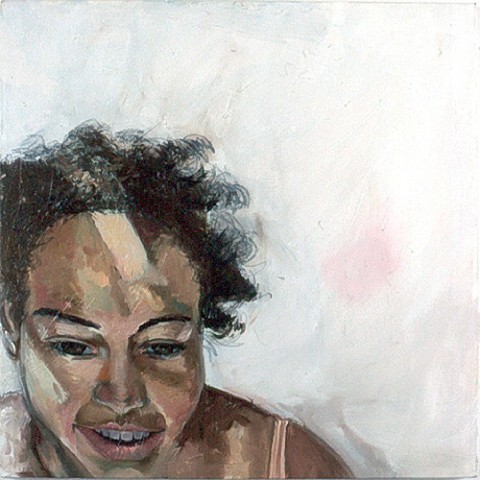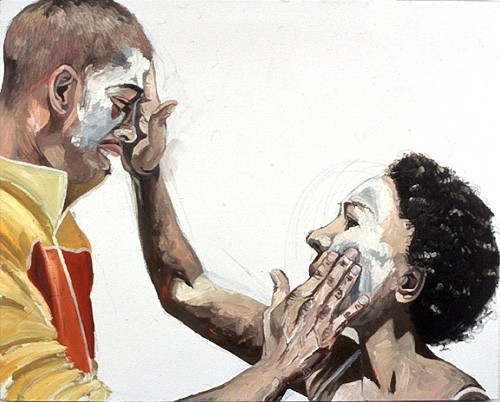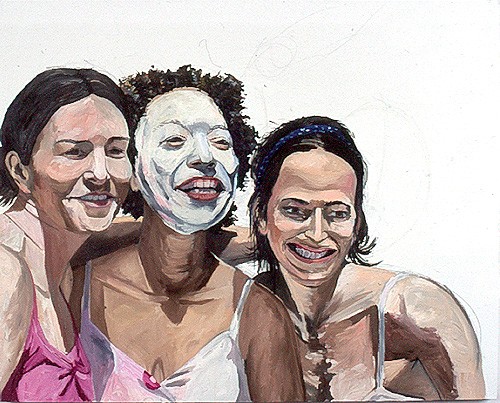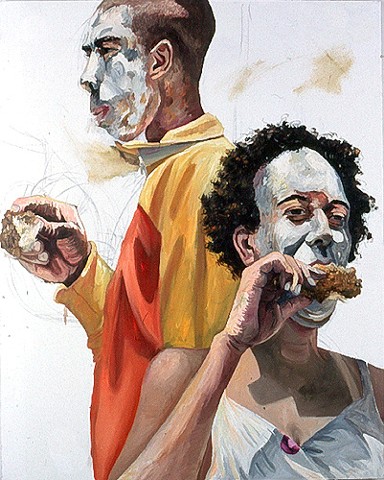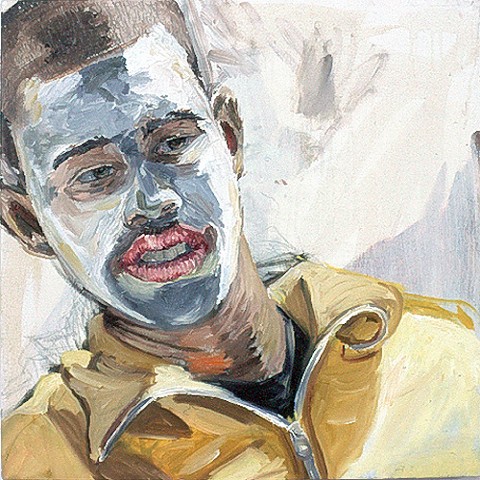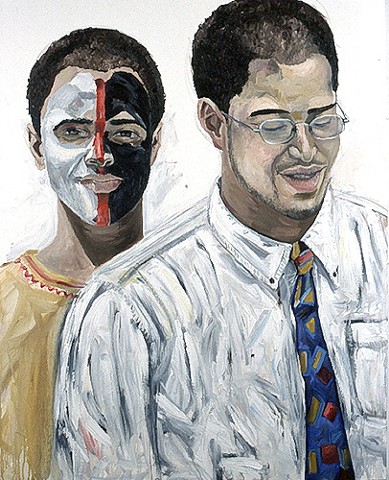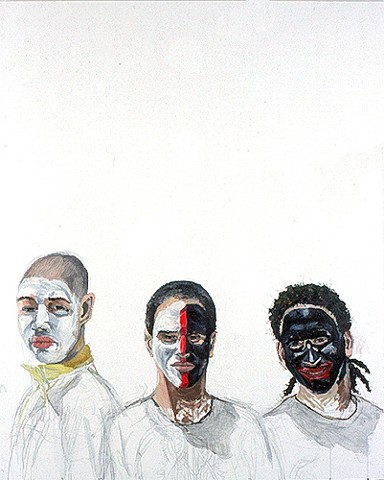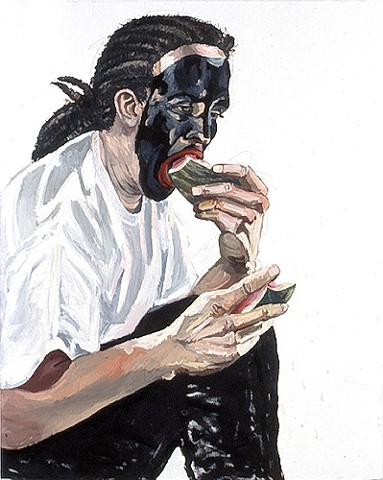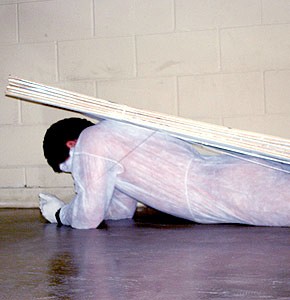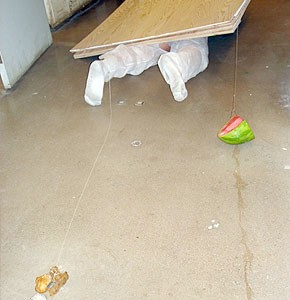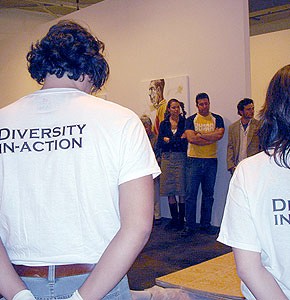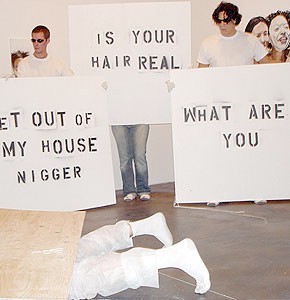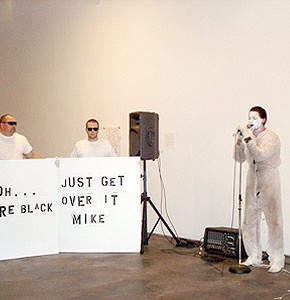In the Middle (2005)
Statement
I make figurative work focused on the experiences of living as a black/white bi-racial person in America. My paintings explore this space using personal narrative as the primary content source. Artists such as Robert Colescott, Beverly McIver, Michael Ray Charles, Glenn Ligon, and Kerry James Marshall have influenced my work.
Racial identity is complicated, and I conceptualize it in the following way. We have two forces working on us at any given time: our perceived identity (how others view us) and our self-identity (how we see ourselves). For many, these two identities line up and fit nicely into the racial categories of American society. As someone who is in the middle of racial categories, my two identities are at odds with one another. How I self-identify is often challenged or subject to question. I self-identify as black, but how others view me comes into question because of my lighter skin complexion. In these instances, I feel that I am not black enough.
On the other hand, I have also been the target of racism due to my "blackness." Because I am living at the crossroads of race, there is a push and pull to fit into either the dominant white culture or some mode of a black aesthetic. I don't neatly have a place in either. Where do I belong? Exploring this question is what I paint about and exemplifies my existing space.
In conveying these multiple identities, I have painted my figures using blackface and whiteface to exaggerate the binary system of black and white and comment on systems of oppression. Historically, blackface was makeup used by a white performer to imitate a black person. This imagery is derogatory and was used to perpetuate racist views and stereotypes, which continue to linger today. The times I have experienced racism were the times I have felt the most black. I have been the target of prevailing attitudes about race and race mixing. The blackface imagery is a metaphor for how I have experienced my blackness as the target of racism.
I use the white makeup as a way to homogenize the figures. They become the color "white." It is a mask. The mask of the oppressor, yet it is also familiar. It connects me to my family household, where my mother is white, my sister is white, my aunts and uncles are white, and where my childhood experiences were predominantly white.
As I locate myself in the middle of the white/black experience, I feel like I don't fit in. I am experienced as "the other" in almost all my social interactions. I am not entirely black, and I am not quite white. The importance of "otherness" in my work is that it is an alternative to the limited choices of race, but it is also the source of my discomfort. It is what keeps me permanently separate. This place of otherness is ultimately what and where my paintings are referencing. I am attempting to portray this space visually. This middle space is the place that I identify with. Many mixed-race people know this space of otherness, marginalization, and emptiness. It is a shared experience.
I have struggled with identity my whole life. It is fluid and dynamic, and there are multiple choices. In America, I am black, but I could pass for white, Puerto Rican, Mexican, Caribbean, Creole, Middle Eastern, and most other mixed or colonized peoples. My work is carving out a space representing my view of the world shared by many others like me. There is a chance to create a new identity that is not tied to American racism if I can find comfort in my "otherness." It is a chance for a new people. In his novel, "The House Behind the Cedars," Charles Waddell Chesnutt introduced a mulatto character, John Warwick, who, along with his sister, had "passed" for white and made his way well up into the planter aristocracy of South Carolina. At one point in the story, Warwick explains to a white friend, "You must take us for ourselves alone - we are new people."
This is how I feel.
